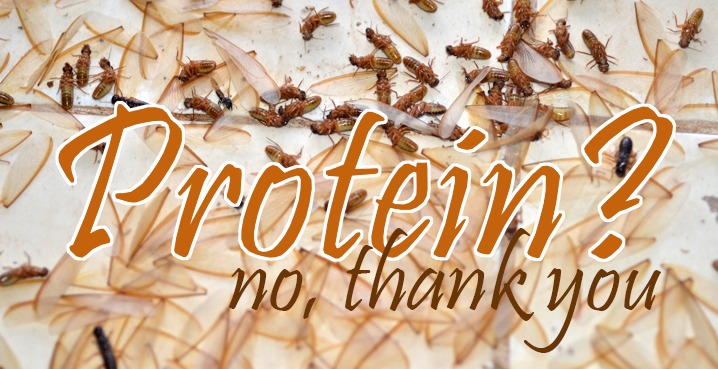
Protein? No, Thank You
There
are so many Liberian dishes that I simply love to eat.
Shockingly, it was even possible to eat Western food in Zwedru
now. However, I still opted for African food which included a
pile of rice with some sort of soup as a topping. My favorites
included cassava leaves, pumpkin soup, beans gravy, and palm
butter. That said, there were also things served in
Liberia that I just couldn’t do. My mother never served me
bug-a-bugs, gbargor, kiss-me, or portor. I never grew up used
to these dishes and nothing will ever make me adapt. Perhaps
you’ll be more flexible than me?
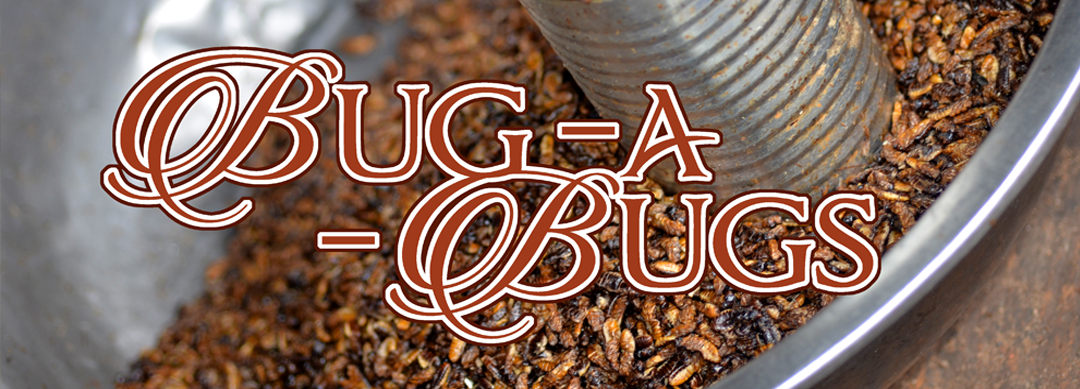
Bug - a- Bugs This is a seasonal dish in Liberia. I visited in the correct season (March and April) because I saw them all over my front porch, for sale in the market, and even on my bedroom floor. In case you are interested, the going price at the market is fifty cents a cup.

Bug - a- Bugs This is a seasonal dish in Liberia. I visited in the correct season (March and April) because I saw them all over my front porch, for sale in the market, and even on my bedroom floor. In case you are interested, the going price at the market is fifty cents a cup.
Bug-a-bugs are termites, and it’s my
estimate that there are more of them in Liberia than humans.
They build huge towering mounds that can easily be twice as tall as
me. Whatever those little critters do to build the mounds,
they are built of very solid material. My local baker used
dirt from a termite mound to make his baking kiln.
During the right season, bug-a-bugs swarm towards lights in the night. However, unfortunately for the little critters, it must be the end of their life-cycle. They lose their wings and fall to the ground, (I’m not sure which happens first.) and then squirm among a pile of lost wings until they die. My porch used to be filled with wings and bugs. And, if I accidentally left a light on at night, they’d crawl under the door and scatter across my living room. That was one of the few times I opened my doors to let neighborhood kids collect insects.
Yes, you read that right.
It’s free protein and all those little bugs are gathered and prepared for a tasty little treat. Now, if you plan it right, and any Liberian who likes bug-a-bugs knows how to plan it right, first throw a tarp on the porch. Then, all you have to do it pick the tarp up from the corners and dip the bug-a-bugs in boiling water to make sure they are dead. Now, I need recipes and times, even for bug-a-bugs, so I asked how long you boil them. Not more than a minute.
During the right season, bug-a-bugs swarm towards lights in the night. However, unfortunately for the little critters, it must be the end of their life-cycle. They lose their wings and fall to the ground, (I’m not sure which happens first.) and then squirm among a pile of lost wings until they die. My porch used to be filled with wings and bugs. And, if I accidentally left a light on at night, they’d crawl under the door and scatter across my living room. That was one of the few times I opened my doors to let neighborhood kids collect insects.
Yes, you read that right.
It’s free protein and all those little bugs are gathered and prepared for a tasty little treat. Now, if you plan it right, and any Liberian who likes bug-a-bugs knows how to plan it right, first throw a tarp on the porch. Then, all you have to do it pick the tarp up from the corners and dip the bug-a-bugs in boiling water to make sure they are dead. Now, I need recipes and times, even for bug-a-bugs, so I asked how long you boil them. Not more than a minute.
Once boiled, and most certainly
dead, place those little critters in the sun to dry for two
days. I always thought they were roasted in red palm oil, but
I was wrong. Those little bug-a-bugs are just naturally
greasy. There’s no need to fry them up in a pan and serve them
hot. Now, just to be certain you don’t accidentally eat any
wings - and who would want to do that while eating termites? – place
them in your rice fanner. It’s a woven platter where you toss
rice up in the air to blow away chaff or place bug-a-bugs in to blow
away pesky bug wings.
If this is just too much work for you, you can buy them already prepared at the market for about fifty cents a cup.
Salt to taste and turn on your favorite movie. You’re supposed to eat bug-a-bugs just like you would popcorn. Honestly, though, when I go to the movies, I prefer nachos. This might be a good time to eat Mexican.
If this is just too much work for you, you can buy them already prepared at the market for about fifty cents a cup.
Salt to taste and turn on your favorite movie. You’re supposed to eat bug-a-bugs just like you would popcorn. Honestly, though, when I go to the movies, I prefer nachos. This might be a good time to eat Mexican.
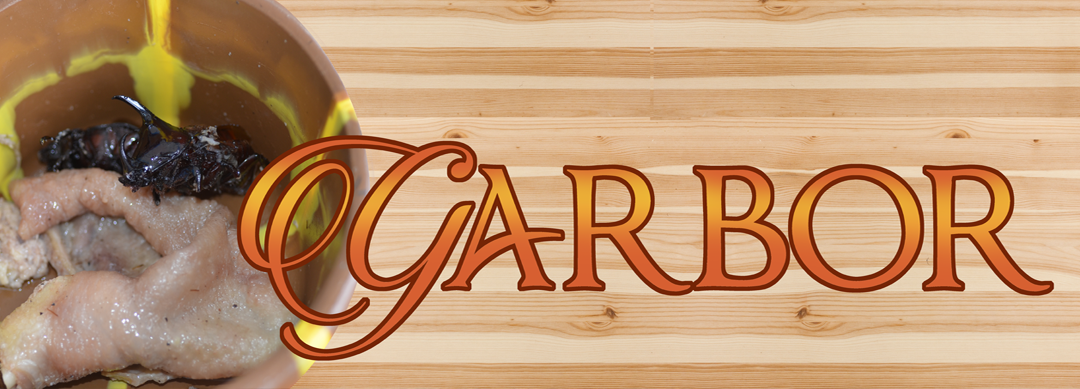
Gbargor
Now speaking of critters attracted to the bright lights at night, in
addition to bug-a-bugs, there were gbargor in Zwedru this time
around. I got the low down on this creature from Robert, a
Liberian friend with the United States Embassy who I met on this
trip. In case you aren’t up on any of your African dialects, a
gbargor is a rhinoceros beetle. Seriously? Those are
things that just never should be eaten! Never!
But, Robert assured me that most Liberian children have eaten them. He personally won’t eat them anymore. I’m not sure how much credit to give him for that decision. He still ate kitole, a bitter vegetable that was the worst food I sampled on this trip. I couldn’t remember the word until I associated it with kitty litter. That’s was it tasted like – used kitty litter. (Not that I have ever eaten any.)
According to Robert, you must play with the gbargor for about three hours before you finally eat it, kind of like a cat playing with a mouse. But, you have to be careful. That little critter has a set of pinchers that can do some damage. So, you only pick it up by the pinchers. (Just a little FYI to file away in case the opportunity ever comes your way.
When playtime is over and you start to feel hungry, all you have to do is throw the gbargor against the wall or floor. It may take a couple of tries so again be careful when you pick it up. When you are done banging the beetle, there’s no frying or baking involved. You roast it over an open fire just like a marshmallow.
It was very difficult to pry a recipe out of Robert because kids never used recipes. I said if I was roasting it, I’d do it for 14 hours. Roberts said, “But then it would be totally burned up!” Exactly my point. Well, with that prodding, he suggested roasting it for about ten minutes. Again, there are no temperatures when cooking over coal fires. But, if you really have a hot fire going, you could try roasting it for five minutes.
One morning at my hotel, there was a mysterious pot next to the tea and sugar. I thought it might be coffee, and that would have been a welcome change! But, when I lifted the lid, there was no Nescafe or any other kind of caffeine. It was the remains of two gbargors! And, upon closer inspection, I learned that it apparently wasn’t a crunchy treat. Only the abdomens were missing.
Now, if you need one other little gbargor tidbit, I learned what you might serve with your beetle. And, how else would you know unless you witnessed it or read about it here? Next to the remains of the two gbargors was a curled up roll of what had to be boiled chicken skin. Now you know.
But, Robert assured me that most Liberian children have eaten them. He personally won’t eat them anymore. I’m not sure how much credit to give him for that decision. He still ate kitole, a bitter vegetable that was the worst food I sampled on this trip. I couldn’t remember the word until I associated it with kitty litter. That’s was it tasted like – used kitty litter. (Not that I have ever eaten any.)
According to Robert, you must play with the gbargor for about three hours before you finally eat it, kind of like a cat playing with a mouse. But, you have to be careful. That little critter has a set of pinchers that can do some damage. So, you only pick it up by the pinchers. (Just a little FYI to file away in case the opportunity ever comes your way.
When playtime is over and you start to feel hungry, all you have to do is throw the gbargor against the wall or floor. It may take a couple of tries so again be careful when you pick it up. When you are done banging the beetle, there’s no frying or baking involved. You roast it over an open fire just like a marshmallow.
It was very difficult to pry a recipe out of Robert because kids never used recipes. I said if I was roasting it, I’d do it for 14 hours. Roberts said, “But then it would be totally burned up!” Exactly my point. Well, with that prodding, he suggested roasting it for about ten minutes. Again, there are no temperatures when cooking over coal fires. But, if you really have a hot fire going, you could try roasting it for five minutes.
One morning at my hotel, there was a mysterious pot next to the tea and sugar. I thought it might be coffee, and that would have been a welcome change! But, when I lifted the lid, there was no Nescafe or any other kind of caffeine. It was the remains of two gbargors! And, upon closer inspection, I learned that it apparently wasn’t a crunchy treat. Only the abdomens were missing.
Now, if you need one other little gbargor tidbit, I learned what you might serve with your beetle. And, how else would you know unless you witnessed it or read about it here? Next to the remains of the two gbargors was a curled up roll of what had to be boiled chicken skin. Now you know.
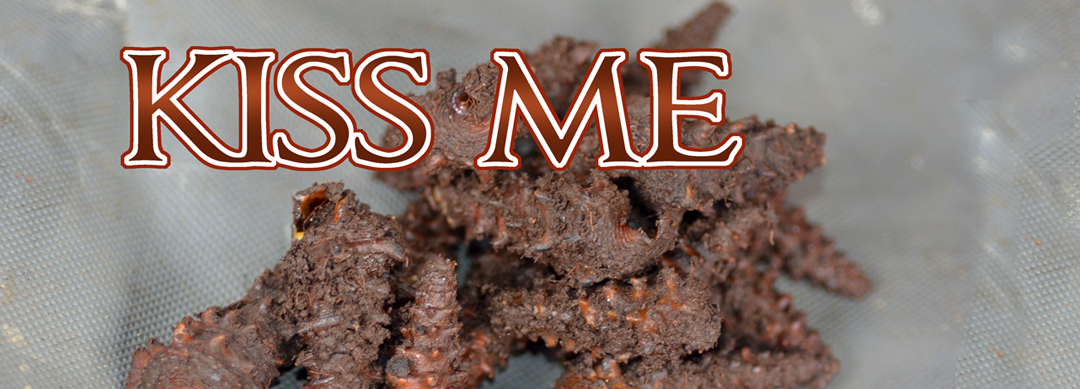
Kiss-me My friend, Daniel, introduced me to kiss-me near the end of my Peace Corps experience. I don’t know what took so long. I’d often eaten at his house. One time, he gave me a piece of meat that still had fur and a hoof. I confessed I only knew how to cook meat that came wrapped in plastic with no trace of hair or hoof. So, he took the meat back and invited me to his home for the first of many meals.
On this particular kiss-me occasion, the soup served over rice was some kind of green paste. At first it looked like my favorite dish, cassava leaves, but looks can be deceiving. Upon closer inspection, it looked more like green slime, and it tasted that way too. There was something like a rock in my soup. I put it aside on a plate where Daniel had put a similar rock. I was used to rocks in my rice. It happened on occasion. So, I didn't think anything of it although it was the size of a small marble.
Finally, Daniel asked me if I knew how to eat "kiss-me". I had no idea what he was talking about. But, I soon found out that those rocks I placed aside were "kiss-me". They were actually the top half of broken snail shells. To eat them properly, you press the shell to your lips and make a kissing sound as you suck those critters into your mouth. It was the slurping kissing sound that gave the dish its name.
I don’t suck snail.
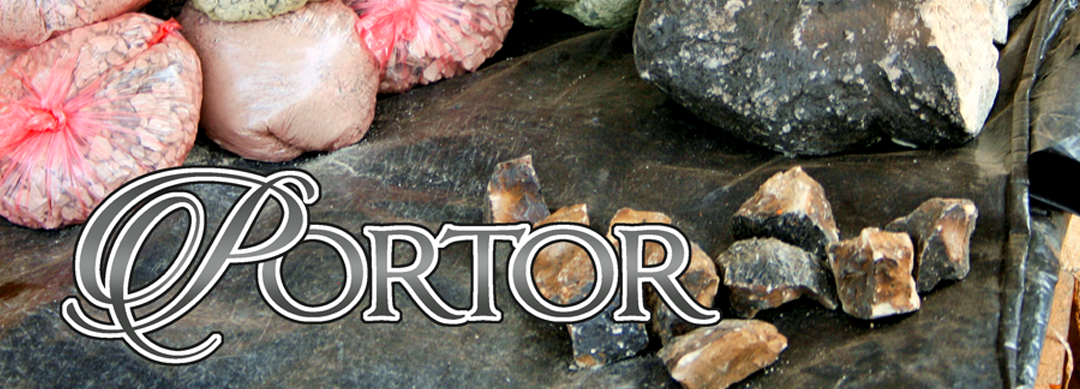
Portor is dried swamp mud!
Now you may understand why I was just too stunned to take a photo. If I were actually going to eat dirt, swamp dirt would be way low on my list of locations for gathering food samples. I was told it was strained to get out sand and other debris. But still, whatever was left behind still was at the bottom of a swamp! Seriously, if you have the money to buy portor, you should have the money for rice. It was beyond me how or why this all started. My guide couldn’t give me any further information. So, I asked around until I got some answers.
Apparently, it is mostly eaten by pregnant women. Somebody had to be the first person to eat this, and according to the story I was told, it relieves some of the exhaustion from the pregnancy. I can think of other things to recommend if you have pregnancy cravings. All of them include lots of sugar and nothing whatsoever from a swamp.
Naturally, doctors and nurses tell pregnant mothers not to eat swamp mud. Not only can it not possibly be good for you, but portor can cover the unborn child with a chalky substance that might cause problems. Might?
I asked about preparation.
When you buy your ball of dried swamp mud, there is no
preparation. You can lick it or nibble at it to your heart’s
content. Portor melts in your mouth, not in your hands!
Those little sections that can be gnawed off will dissolve when
mixed with saliva.
In case you are wondering, I would rather suck snail.
In case you are wondering, I would rather suck snail.